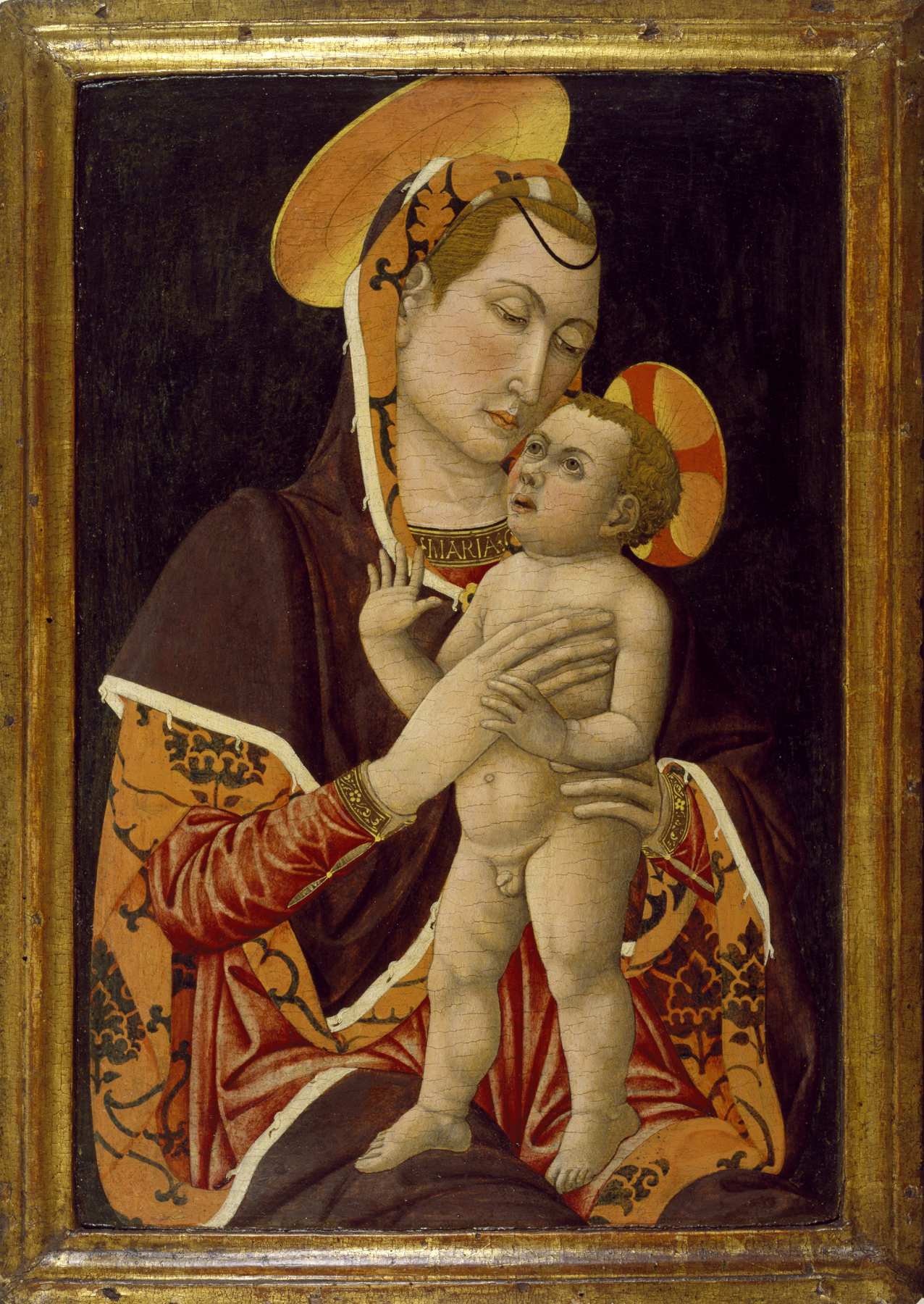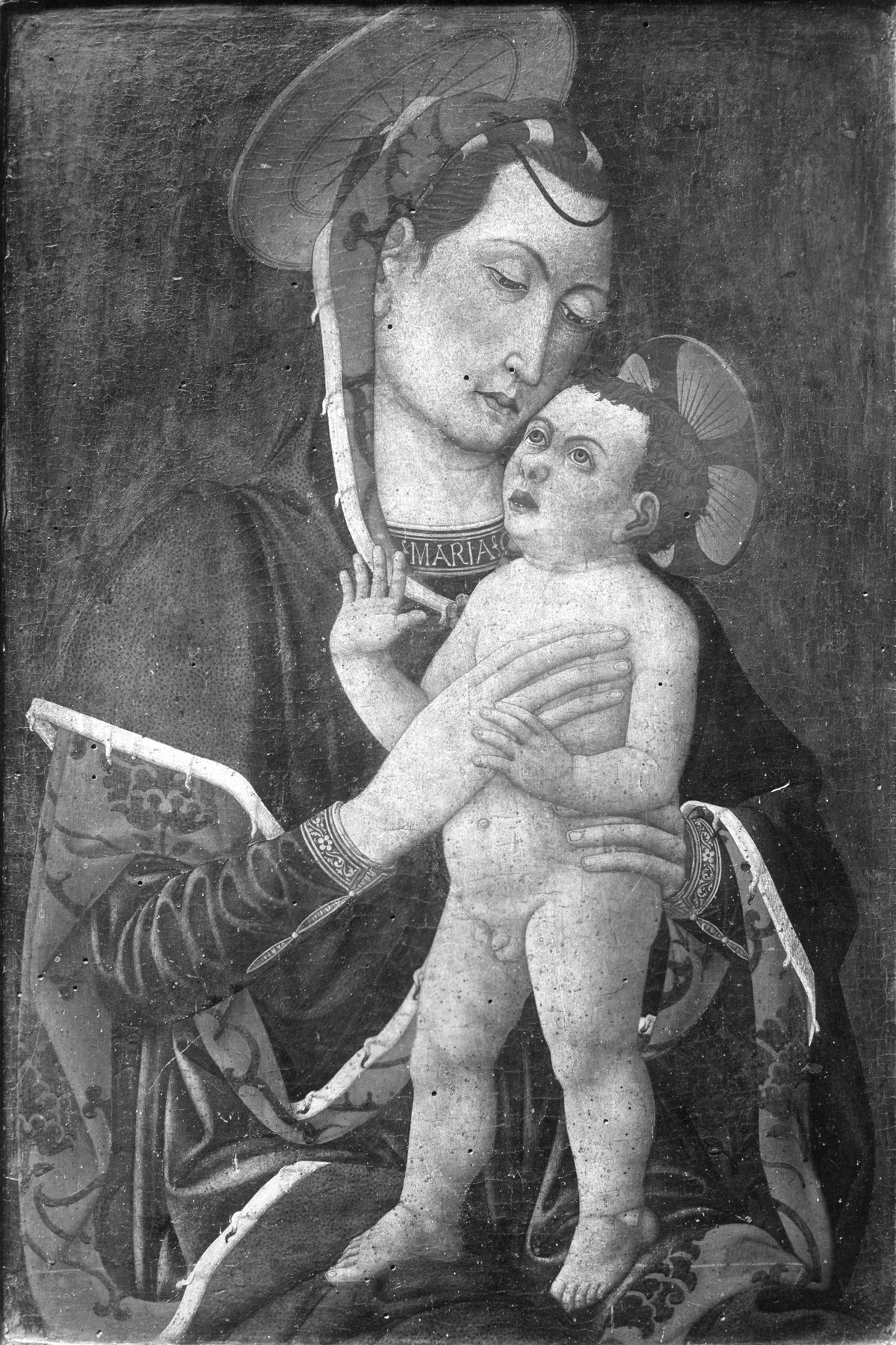Virgin and Child
(Renaissance Europe )
Personal devotions directed to the Virgin were a natural part of life for Christians in Renaissance Europe, so a painting of the Virgin and Child of this size and intimacy was most likely intended for the home. Giovanni Francesco da Rimini followed the conservative northern Italian tradition of painting that was only slightly affected by the illusionistic innovations of mid century. Although born in the town of Rimini, he was in Padua by 1441 to 1444, thus at the same time as Dario di Giovanni, the artist of the Walters' Abduction series (37.1178-1180). In the present work, which can be provisionally dated in connection with a signed and dated Virgin and Child in the National Gallery, London, to the later part of his career in Bologna, the Virgin and Child are treated in a more stylized way than the more naturalistic manner of the Virgin and Child from the same years by Giorgio Schiavone (who also trained in Padua). Here the focus is on Christ whose eyes are rapturously raised to heaven, as if in contemplation of his future Passion. As an encouragement to the viewer, the rim of the Virgin’s robe is inscribed with words from a prayer regularly addressed to her by the faithful: [Ave] Maria, g[ratia plena]. . . (Hail Mary, full of grace. . .).
Inscription
Provenance
Provenance (from the French provenir, 'to come from/forth') is the chronology of the ownership, custody, or location of a historical object. Learn more about provenance at the Walters.
Private collection, Florence, before 1912; purchased by A. S. Drey, Munich and New York, ca. 1913; purchased by Henry Walters, Baltimore, ca. 1915; by bequest to Walters Art Museum, 1931.
Exhibitions
| 2008-2009 | Realms of Faith: Medieval and Byzantine Art from the Walters Art Museum. Museum of Biblical Art, New York; Colby College Museum of Art, Waterville; Joslyn Art Museum, Omaha. |
Conservation
| Date | Description | Narrative |
|---|---|---|
| 5/28/1942 | Treatment | coated; filled; inpainted; surface cleaned; varnish removed or reduced |
| 1/25/2008 | Examination | examined for exhibition; examined for loan |
Geographies
Italy, Padua
(Place of Origin)
Italy (Place of Origin)
Measurements
Painted surface H: 20 15/16 x W: 14 1/8 in. (53.2 x 35.8 cm); Panel H: 23 3/4 x W: 17 1/8 x D: 1 in. (60.4 x 43.5 x 2.6 cm)
Credit Line
Acquired by Henry Walters, ca. 1915
Location in Museum
Accession Number
In libraries, galleries, museums, and archives, an accession number is a unique identifier assigned to each object in the collection.
In libraries, galleries, museums, and archives, an accession number is a unique identifier assigned to each object in the collection.
37.488




